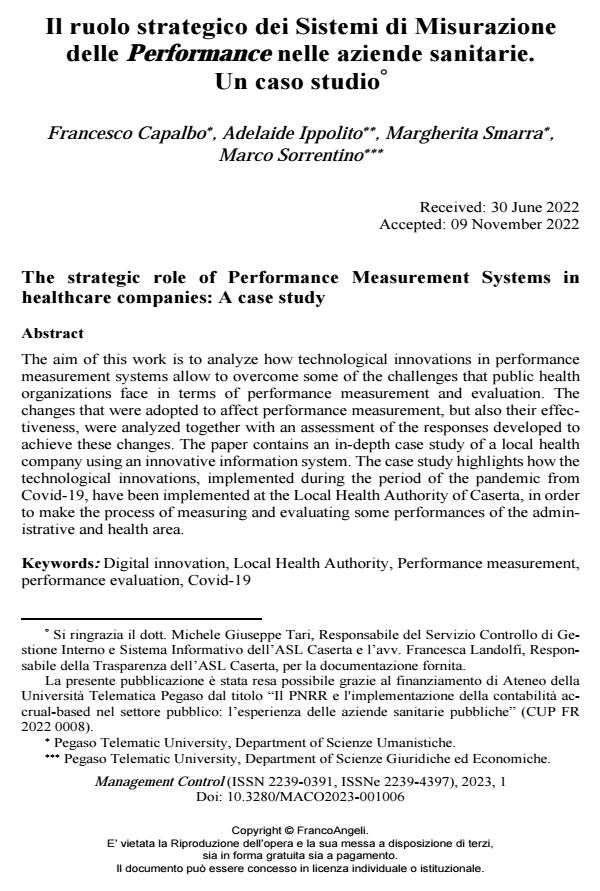Il ruolo strategico dei Sistemi di Misurazione delle Performance nelle aziende sanitarie. Un caso studio
Titolo Rivista MANAGEMENT CONTROL
Autori/Curatori Francesco Capalbo, Adelaide Ippolito, Margherita Smarra, Marco Sorrentino
Anno di pubblicazione 2023 Fascicolo 2023/1
Lingua Italiano Numero pagine 24 P. 119-142 Dimensione file 271 KB
DOI 10.3280/MACO2023-001006
Il DOI è il codice a barre della proprietà intellettuale: per saperne di più
clicca qui
Qui sotto puoi vedere in anteprima la prima pagina di questo articolo.
Se questo articolo ti interessa, lo puoi acquistare (e scaricare in formato pdf) seguendo le facili indicazioni per acquistare il download credit. Acquista Download Credits per scaricare questo Articolo in formato PDF

FrancoAngeli è membro della Publishers International Linking Association, Inc (PILA)associazione indipendente e non profit per facilitare (attraverso i servizi tecnologici implementati da CrossRef.org) l’accesso degli studiosi ai contenuti digitali nelle pubblicazioni professionali e scientifiche
The aim of this work is to analyze how technological innovations in performance measurement systems allow to overcome some of the challenges that public health organizations face in terms of performance measurement and evaluation. The changes that were adopted to affect performance measurement, but also their effectiveness, were analyzed together with an assessment of the responses devel-oped to achieve these changes. The paper contains an in-depth case study of a lo-cal health company using an innovative information system. The case study high-lights how the technological innovations, implemented during the period of the pandemic from Covid-19, have been implemented at the Local Health Authority of Caserta, in order to make the process of measuring and evaluating some per-formances of the administrative and health area.
Parole chiave:Digital innovation, Local Health Authority, Performance measure-ment, performance evaluation, Covid-19
- Dalla misurazione dell'outcome a quella dell'impact: la Sentiment Analysis a supporto della valutazione della performance delle aziende sanitarie pubbliche Christian Di Falco, Guido Noto, Gustavo Barresi, in MANAGEMENT CONTROL 2/2025 pp.157
DOI: 10.3280/MACO2025-002008 - Environmental, Social, Governance (ESG) Domenica Lavorato, Palmira Piedepalumbo, Rita Lamboglia, pp.621 (ISBN:978-3-031-76617-6)
Francesco Capalbo, Adelaide Ippolito, Margherita Smarra, Marco Sorrentino, Il ruolo strategico dei Sistemi di Misurazione delle Performance nelle aziende sanitarie. Un caso studio in "MANAGEMENT CONTROL" 1/2023, pp 119-142, DOI: 10.3280/MACO2023-001006